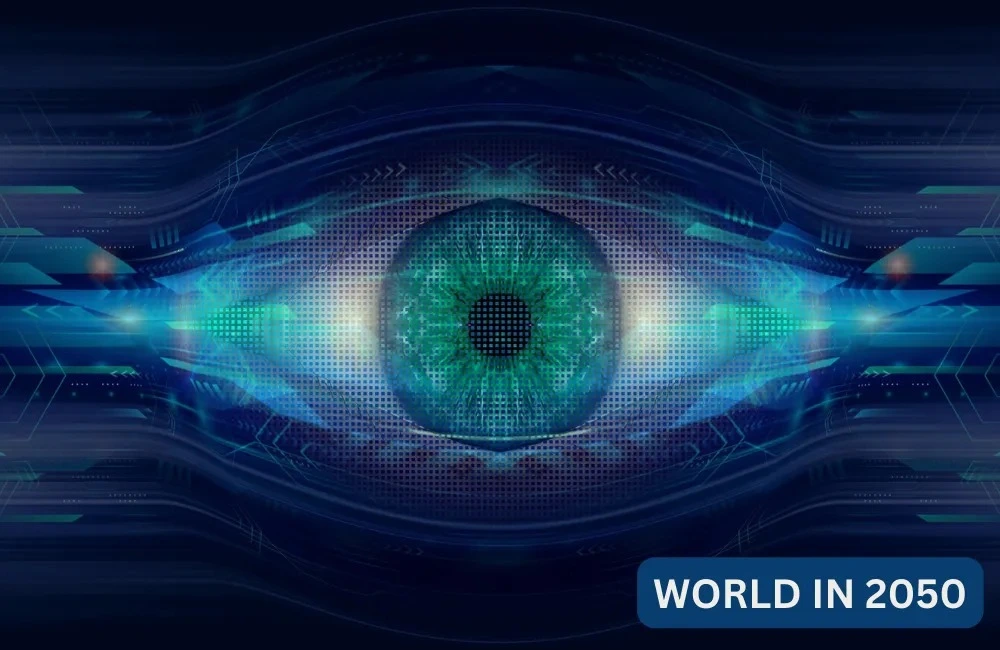
The Future World and Humanity
In the way the world is progressing in the fields of science and technology, what will be the implications for humanity and this planet? Let’s try to understand this. Firstly, we need to assess the changes happening on this planet. In the next hundred years, there will be a significant increase in the average temperature of the Earth and a rise in sea levels, in addition to changes in weather patterns. Coping with this changing environment will require dealing with severe shortages of human and animal deaths and food. The elimination of insects will affect all creatures, ultimately impacting human life, and the chain of human deaths will accelerate after a century.

According to research estimates, by 2050, the rising sea levels will cause many cities and islands near the sea to disappear from the Earth. The advent of robotic machines will result in the elimination of 50% of jobs, with every task being performed smartly and autonomously.
Both robotics and technology will transform the nature of all industries, and there will be further advancements in drone flights, whether for civilian or military use, making human life easier. Human society will undergo a transformed society. Many languages spoken on Earth will become extinct and obsolete. Due to the advancement of technology, there will be an impact on human evolution, leading to changes in its structure. According to scientists’ estimates, human race extinction will occur within a thousand years.
By 2025, according to a research estimate, there will be a 1.5% increase in the Earth’s temperature compared to the pre-industrial era, and this will continue to rise unless addressed. The environment of 2050 will be very different from today’s environment, with changes in education, income sources, and human living conditions. Due to scientific progress, the means of income in the 21st century will be faster and more effective. Human means of income will be through rockets, providing better facilities for humans in space and becoming their new habitat. The dreams of the present era will become a reality in the next century.
Due to the advancement of scientific progress in medicine, there will be an impact on human health and lifespan, and diseases like cancer will become treatable. Patients will be able to receive treatment from doctors without leaving their homes, thanks to technology. The speed of computers will be many times faster than today’s computers. With the advent of 3D printing technology, anything can be easily manufactured and moulded according to its construction. Interactive holographic television will adorn homes by 2050, which can be activated with the press of a button on mobile phones, allowing for the viewing 3D and virtual films.
In the current era, some jobs provide convenience with all information displayed in front of the driver’s screen. In this era, students will no longer be seen carrying large bags for education; instead, they will carry tablets and laptops. All the syllabi of students will be available on them, freeing them from carrying heavy books. Touchscreens will replace blackboards, allowing teachers to create shapes easily. Future humans will strive to improve their defensive, mental, and physical abilities through technology, which will reduce the use of natural factors.
There are some positive developments in this human advancement, including the creation of new antibiotics and vaccines, and the establishment of democratic societies. However, when looked at negatively, a new era of nuclear weapons and fascism is also emerging. Environmental and societal changes indicate a fear of overcrowding by 2050, according to an estimate by the World Bank. Human evolution will continue as long as they continue to advance their race and protect it. Human evolution is affecting the current environment in three ways:
- Increase in population rate,
- Environmental changes, including smoke from burning petroleum products obtained from land and seas, and
- Melting glaciers.
This is leading to deforestation, poor air quality, and the scarcity of clean drinking water. Human progress is showing its impact on the environment, such as changes in land construction, plant species, and the carbon cycle. Due to the increasing population and construction of buildings, there will be a shortage of agricultural land, affecting food shortages. Forests will start disappearing from the face of the earth. According to scientists, this environmental change will lead to changes in human evolution and its structure.
Visible changes in humans, such as dense hair, large heads, and pronounced wrinkles, will occur. According to scientists’ estimates, human race survival is visible only in such a vital environment for a thousand years. Otherwise, this race will be extinct even before that. Due to the earth’s proximity to the solar orbit, the temperature will increase to an unbearable level. Significant changes are expected in the backs and necks of humans, and changes in the structure of their hands and eye sockets will also be visible.
And their structure will have undergone significant changes compared to the current human structure. There will be changes in the agricultural sector, and vertical farming will increase due to the scarcity of land. Tall buildings will be used for agriculture, and vertical farms and genetically modified crops and meats will be common. New fields of employment have already been introduced, such as space tourism companies, computer and genetic engineering fields, and experts in vertical agriculture. In addition, many other new fields of employment will emerge, while old fields will become obsolete. The world will be based on artificial intelligence, mobile cameras, and autonomous structures.
In the future, the focus of scientists’ research will be on the moon and Mars. The world in which we live will undergo a transformed society after a century. Seasonal and temperature fluctuations will be more frequent and longer, leading to food shortages and droughts. Migration from one place to another will be faster, and the incidence of infectious diseases will increase. Environmental changes will occur rapidly. No scientist can predict the next century accurately; all these are speculations and scientific estimates.
Navigating Tomorrow: A Deep Dive into 10 Future Trends Shaping Our World
Journalist

